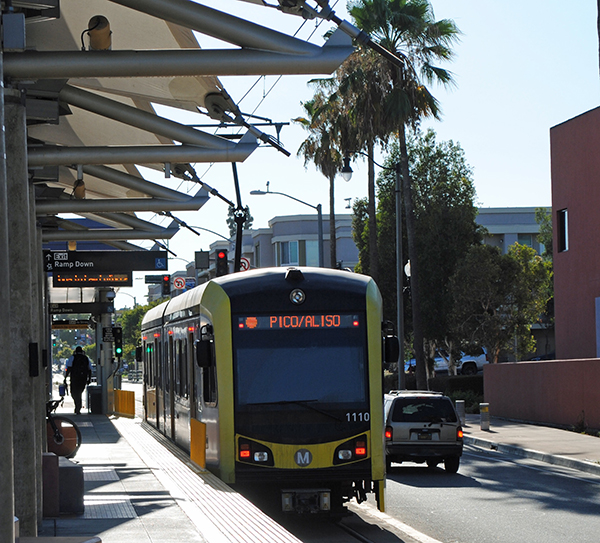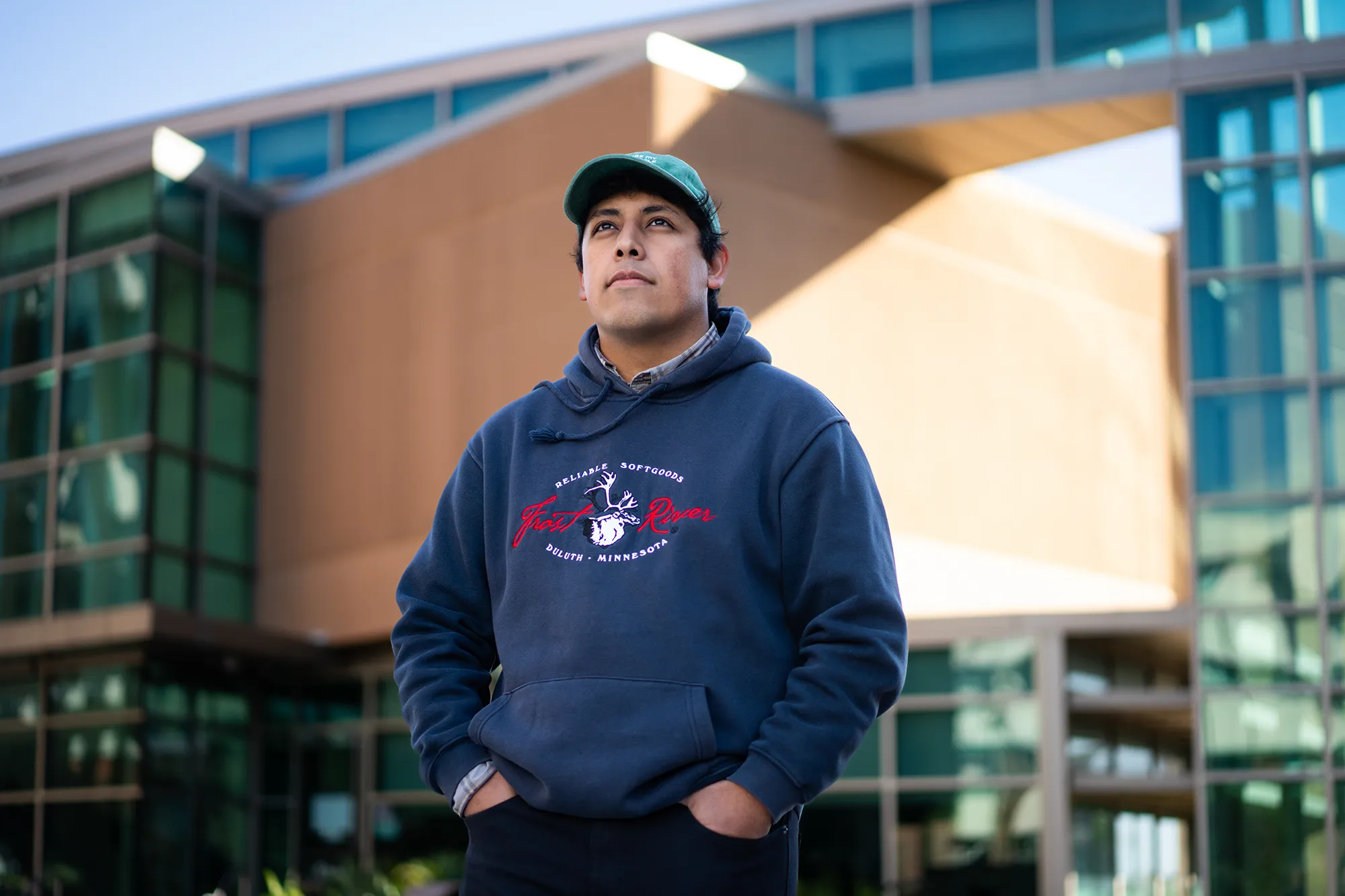By Alfredo Santana
Contributing Writer
EAST LOS ANGELESS — The L Line light rail extension from East Los Angeles to Montebello has been confirmed as the preferred building alternative for the eastern extension of the rail line while the option of extending the line to Washington Boulevard and Lambert Road in Whittier remains alive.
However, extending the former Gold Line project to Whittier hinges on the authorization and preparation of an environmental impact report for the entire project under guidelines from the California Environmental Quality Act and federal and state funding, it was announced on Nov. 16.
The six-member Planning and Program Committee of the Metropolitan Transportation Authority Board of Directors voted 6-0 to get environmental impact clearance for the full project’s length, following a set of four recommendations prepared by project manager Jennifer Cristales-Cevallos.
With the vote, the committee paved the way for full design and planning of an underground open air station at the intersection of Atlantic and Pomona boulevards, and for a 4.6-mile tunnel segment with three more stations stopping at Greenwood Avenue and Washington Boulevard in Montebello, pending Board of Directors approval on Dec. 1.
Cristales-Cevallos had previously announced at a virtual meeting her intention to introduce the latter as the preferred local building alternative in the so-called Eastside Transit Corridor Phase 2 Project.
The project is slated to add a maintenance depot in Montebello to serve up to 125 light rail vehicles.
“It’s one of our pillar projects,” said MTA committee member Fernando Dutra, who is alos a Whittier City Council member. “Staff recommendation on this achieves a major milestone in terms of the project implementation.”
Cristales-Cevallos said that the agency expects to get full environmental clearance for the project by next summer.
Craig Hoshijima, a data entry operator with the MTA, said the construction project to Montebello’s Greenwood Station is now estimated to cost $7.9 billion, with a list of six funding sources from local taxes, Measures M and R and potential state and federal allocations.
“Funding for the completion to Whittier will be pursued after funding for the [local preferred alternative] is secured,” Hoshijima said.
Before the Bureau of Labor Statistics reported that inflation reached a 7.7% a year in October, the chosen Alternative 3 was estimated to cost from $5.1 to $5.3 billion.
Measure M is a permanent half-cent sales tax to expand public transportation, subsidize transit fares for the needy and retrofit damaged bridges.
Measure R raises a half-cent tax on each dollar of sale since it was approved by voters in 2008 to support transportation projects and improvements, expected to sunset in 2038.
So far, $3 billion has been secured from Measures M and R, and 3% of taxes or $750 million are expected from unincorporated Los Angeles, Commerce and Montebello, Hoshijima said.
According to the project’s initial environmental impact report, each alternative accounted for a series of potential construction impacts at major traffic intersections, commercial zones, safety for school children and estimated carbon emissions at building intervals.
Alternative 1, called the Washington option, aims to cover a nine-mile route from East LA’s Atlantic Boulevard station to the Lambert station in Whittier, with a mix of seven stations at underground, aerial and street levels matching railroad designs.
Already discarded alternative 2, a shorter project following the same underground path from East L.A., was going to cover 3.2 miles to Commerce with three tunnel stations and a service depot.
Nonetheless, Whittier Mayor Joe Vinatieri slammed Cristales-Cevallos and the MTA for the current lack of commitment to invest in public transportation infrastructure to serve Southeast Los Angeles residents.
“While we are happy that the entire extension of the Gold Line, now L Line, will be environmentally cleared through Whittier, we are disappointed to learn that staff is recommending a ‘locally preferred alternative’ to Greenwood in Montebello,” Vinatieri said in an emailed statement.
“Our Washington Boulevard Coalition remains united in wanting to see the entirety of this line built. It was one of many promises made to voters through the adoption of Measure M, and frankly, in light of surpluses recorded at the county and state levels, it seems disingenuous to say there isn’t a way to obtain enough funding for investing in environmentally efficient transportation connectivity in our underserved Southeast L.A. region,” Vinatieri added.
An executive summary prepared by CDM Smith/AECOM indicated that the chosen alternative with the Montebello maintenance and storage facility “would be the environmental superior alternative as it would result in a lower number of significant impacts,” compared to the other two with a Commerce maintenance facility.
A separate service facility in Commerce would service about 100 vehicles from throughout the region.
Cristales-Cevallos said the Federal Transit Administration likes to see projects with local funded sources before committing to allocate money for construction.
“What we are trying to do is work diligently to see how we can seek federal funding for the first phase of the project as we strategize for the second phase of the project,” Cristales-Cevallos said in reference to the future light rail line to Whittier.
MTA Communication Manager Rick Jager said that the agency has not discarded the light rail line to Whittier, and will seek environmental clearance to have it aligned for competitive grants and funding to be ready for groundbreaking.
“Since the re-initiation of the project in 2019, it was anticipated that the project would be built in phases due to funding challenges,” Jager said. “Therefore, initial operating segments were studied in the draft environmental report. The project team has identified strategies to advance the project and will be actively seeking federal and state funding to build the project to Whittier.”
Dutra said that the construction work for the project is slated to start in 2029, and finish in 2035, and pushed to get the MTA committed to fund the second light rail train phase to Whittier in three years.
Also, the committee postponed a recommendation to increase payment for the CDM Smith/AECOM joint venture for nearly $4.5 million to restart the process for environmental clearance in line with the National Environmental Policy Act.
If approved by MTA’s Chief Executive Officer Stephanie Wiggins, the full contract value with CDM Smith/AECOM will increase from $27.58 million to $32.33 million for a performance period extending from Dec. 22, 2022 to Dec. 31, 2024.












